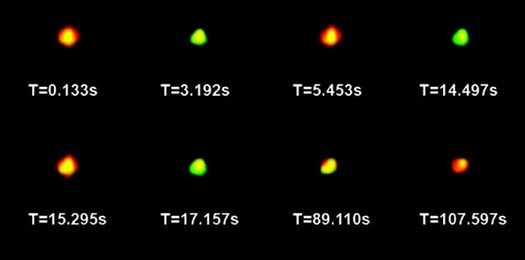Quantum Dots Can Tag Individual Molecules With A Fluorescent Glow
A team of engineers at Ohio State University have packed a nanoparticle full of fluorescent blinking quantum dots. When the...

A team of engineers at Ohio State University have packed a nanoparticle full of fluorescent blinking quantum dots. When the particle is attached to a single molecule, it functions as a gaudily glowing beacon.
With their bright, continuous fluorescent glow that transitions between red, green and yellow, the nanoparticle is a better way to tag molecules, both in its function and in its good looks.
Earlier attempts to tag molecules with bright quantum dots were hindered by the dots’ on-and-off blinking, like trying to follow a blinking flashlight through a dark room. The Ohio State engineers fixed the faulty flashlight. Led by assistant professor Jessica Winter and research scientist Gang Ruan, the team placed a group of quantum dots inside a slightly larger plastic nanoparticle. Whenever a single quantum dot within the nanoparticle blinked off, the team simply followed the glow of its neighbors.
The team used green and red quantum dots. Nanoparticles filled with red dots glow red, while those with green dots glow green. The almost magical color changes occur in the nanoparticles containing a mix of red dots and green dots. When a green dot blinks at the same time as a red dot neighbor, the light appears yellow to the eye. The quantum dot flashes mix together to become blobs of color that melt away as other colored blobs materialize, making the nanoparticle look like a miniature lava lamp.
Using the new technology, which the Ohio State research team is trying to patent, scientists could gain a better glimpse of biological processes at a cellular level.